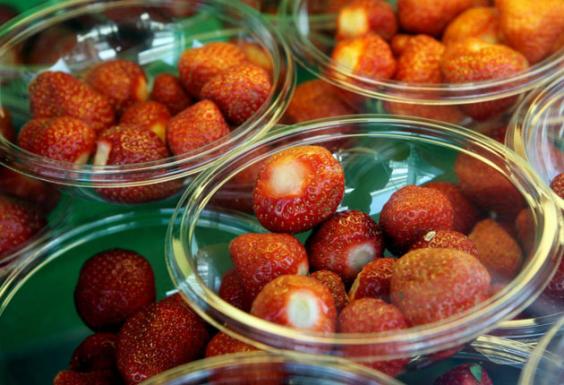The truth about how many chemicals are in everything we eat

All foods — and everything else around us — are made up of chemicals, whether they occur in nature or are made in a lab.
The idea that there is a difference between "natural" chemicals, like those found in fruits and vegetables, and the synthetic version of those chemicals is just a bad way of looking at the world.
There are many chemicals in our food's natural flavours and colours. Some of them have long, scary-sounding names, too.
That means everything we smell or taste is a response to chemicals.
The characteristic smell of cloves, for example, comes from one chemical called eugenol. And cinnamon, which is just the dried inner-bark of specific trees, gets its aroma and flavor from the compound cinnamaldehyde.
So, both artificial and natural flavours contain chemicals. The distinction between natural and artificial flavourings is the source of chemicals.
Natural flavours are created from anything that can be eaten, like animals and vegetables, even if those edible things are processed in the lab to create flavourings.
Artificial flavours come from anything that is inedible, such as petroleum, that is processed to create chemicals of flavourings.
Sometimes a chemical flavouring could be made from either natural or artificial sources — the resulting molecule is the same, but the route to making it can be different.
So, why use artificial flavours at all? The synthetic chemicals in artificial flavours generally cost less to produce than finding natural sources of chemicals. They are also potentially safer because they have been rigorously tested and used. Producing them can be more eco-friendly as well since it doesn't require growing fields of food first.
The compound vanillin, for example, is responsible for the flavour and smell of vanilla. In nature, vanillin comes from an orchid native to Mexico. But the process of extracting this pure, natural chemical is extremely lengthy and expensive. So scientists found a way to make a synthetic version of vanillin in a lab.
In 2006, Japanese researcher Mayu Yamamoto figured out how to extract vanillin from cow poop. She was awarded the Ig Nobel Prize at Harvard University for this development.
Most people don't realise that there can be as many chemicals in a food's natural flavour as its artificial counterpart. The number of chemical ingredients used to make the artificial strawberry flavour in a fast food strawberry shake, for example, is similar, chemically to the number of chemicals in a fresh strawberry.
Artificial grape flavour is derived from a chemical in concord (purple) grapes — not the red or green grapes we're used to buying in supermarkets. This is why artificial grape-flavoured things like candy and soft drinks are purple and why store-bought grapes taste nothing like this fake stuff.
Some natural flavours can be more dangerous than the artificial ones. Traces of cyanide can be found in almond flavour, or benzaldehyde, when derived from nature. That's why in movies, the smell of bitter of almonds on the victim is often linked to cyanide poisoning.
Raw soybeans, from which soy sauce is made, are also toxic. Industrial soy sauce, or the stuff you find in convenient to-go packets, is made from acid-hydrolyzed vegetable protein, not boiled soybeans.
Many people worry about "chemicals" like MSG added to their foods. The link between headaches and MSG, called "Chinese restaurant syndrome," is just a myth. Researchers think that symptoms related to eating Chinese food are caused by high amounts of salt.
Read more:
• These are the 19 best countries for raising a family, as voted by expats
• These will be the 32 most powerful economies in 2030
• 24 ways to influence even the most resistant people
Read the original article on Business Insider UK. © 2016. Follow Business Insider UK on Twitter.
Join our commenting forum
Join thought-provoking conversations, follow other Independent readers and see their replies
Comments